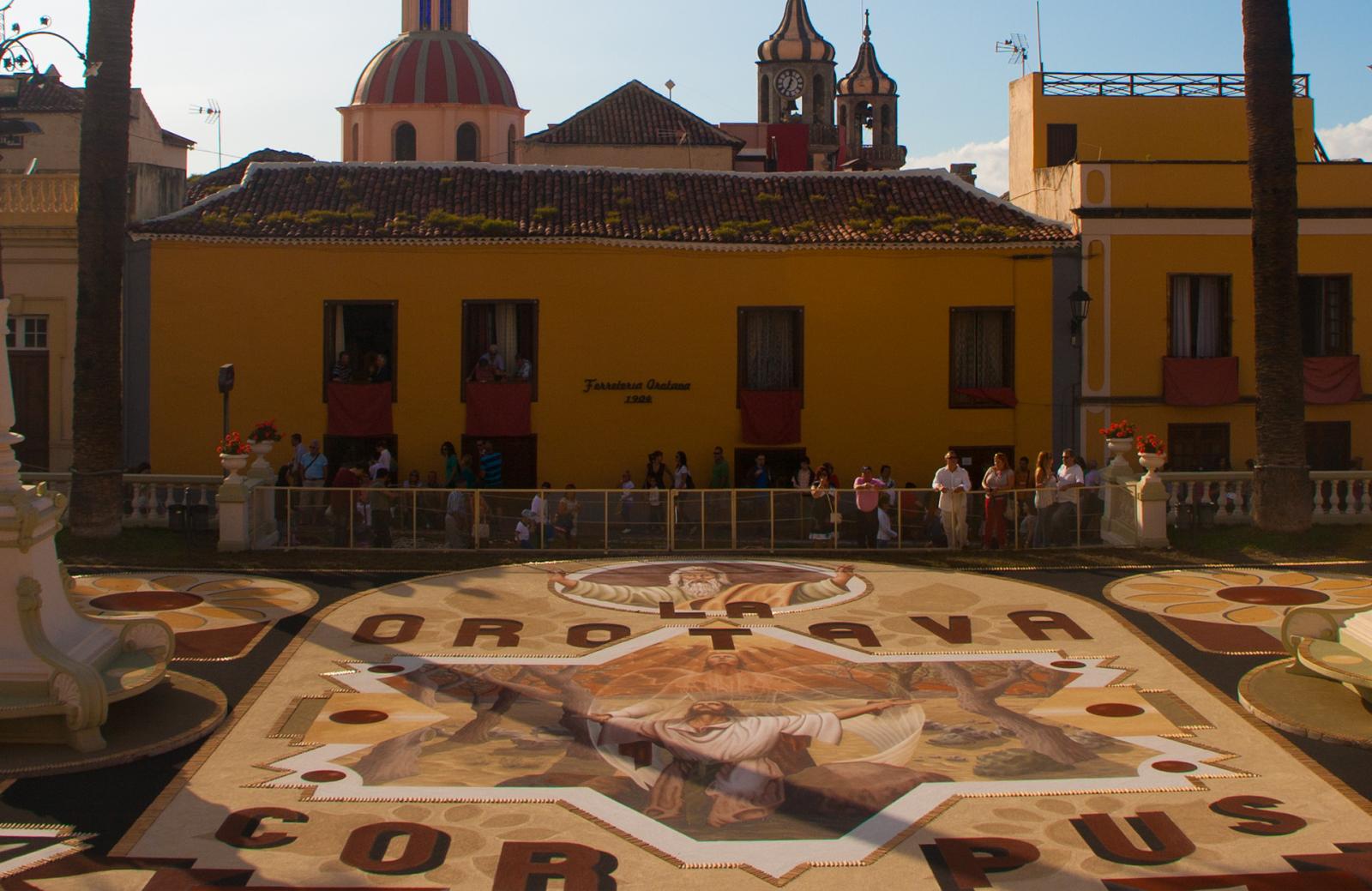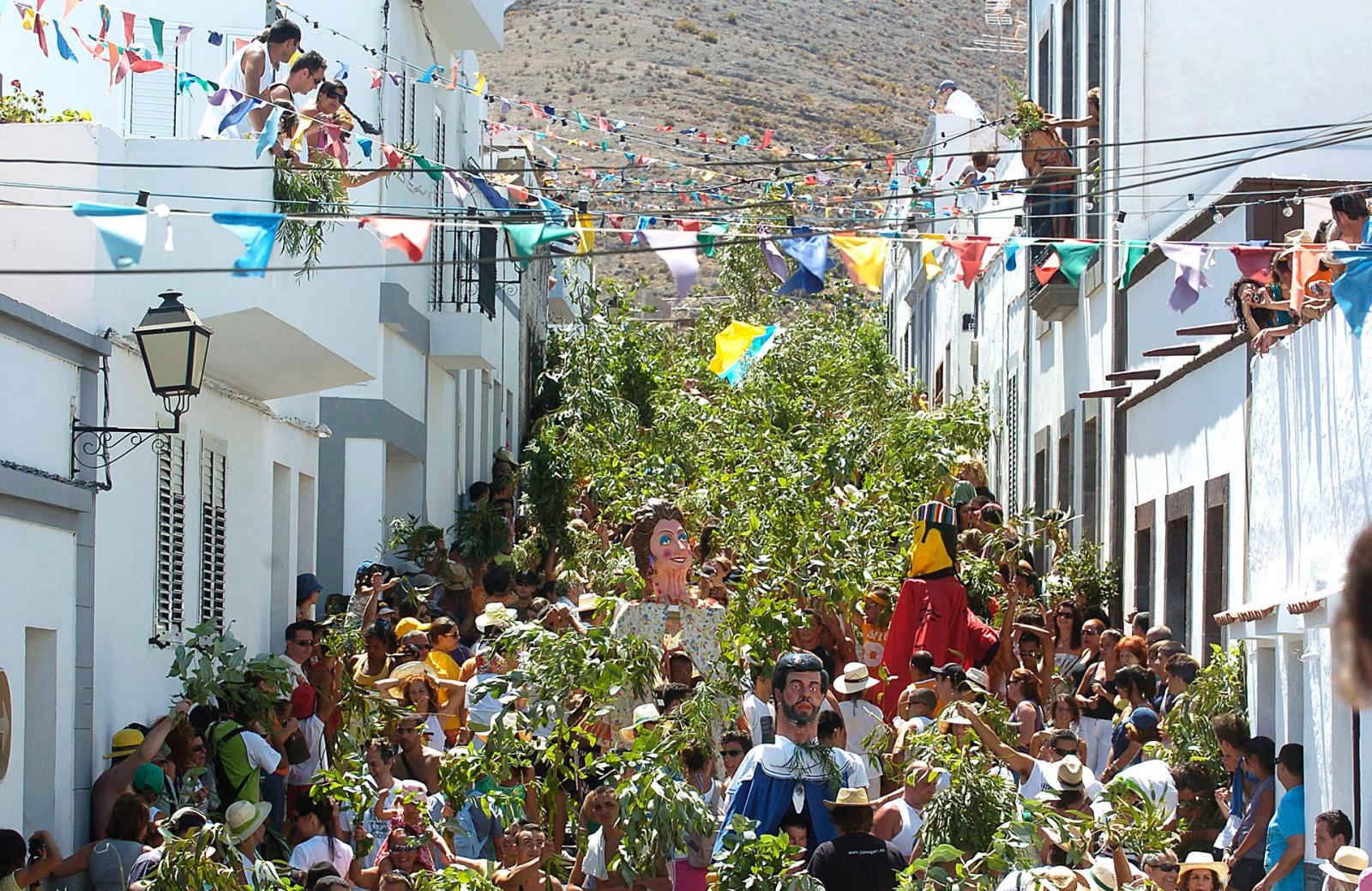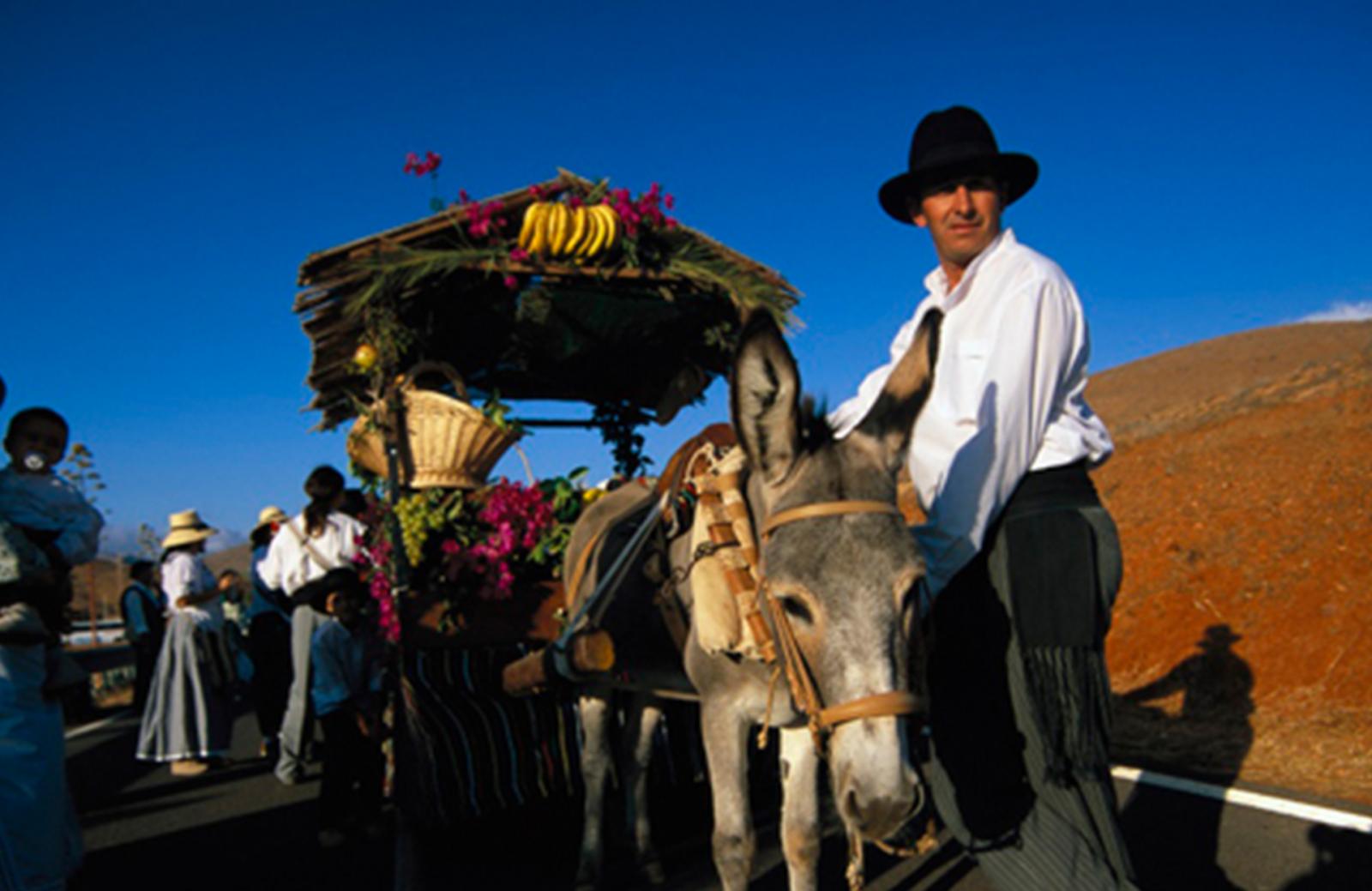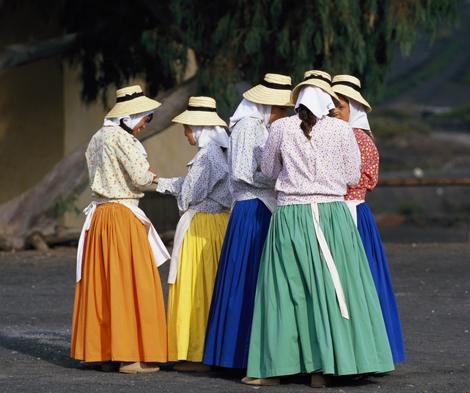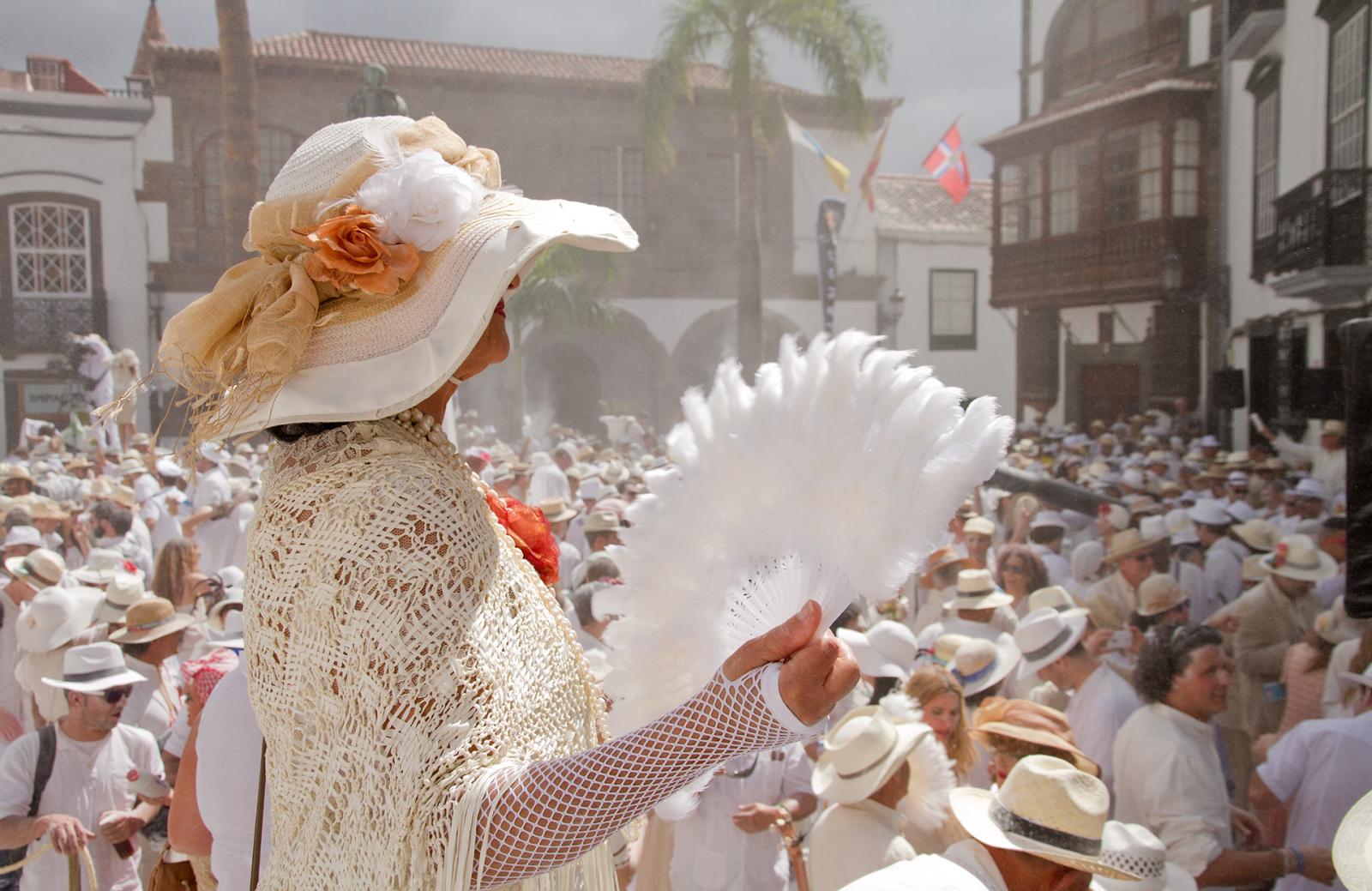The Canary Islands are famous worldwide for their carnival, where the streets are decked out with fun and festivities. However, and in spite of not being as widely known internationally, there are many, many popular celebrations and rooted traditions that have persisted unchanged over the years, almost over the centuries.
Visitors and tourists in the Canary Islands are becoming more and more interested in their local festivities. A different way to discover the local culture and find out a bit more about the true Canary Islands nature, with its quiet, friendly traits is to participate, discover the fervour of the religious celebrations or move to the sound of their traditional rhythms and dances.
Bajada de la Virgen de los Reyes
El Hierro
On the first Saturday in July, every four years, the island of El Hierro celebrates its main festivity: a celebration where the islanders carry their patron saint, ‘Our Lady of the Kings’, in a procession down from her shrine to the capital city, Valverde. Almost 28 kilometres with dozens of dancers dressed in white, with multicoloured hats, dancing to the beat of drums and ‘chácaras’, a kind of local castanet.
Fiestas de la Bajada de la Virgen de las Nieves
La Palma
Declared of National Tourist Interest, the ‘Descent of Our Lady of the Snows’ festivities, which have been taking place every five years since 1680, make Santa Cruz de La Palma the centre of numerous celebrations that go on for almost two months. Once the figure of Our Lady is brought into the El Salvador Parish, in the Plaza de España, events begin that attract thousands of people to the island to enjoy concerts, dances, pilgrimages and, especially, the magic of the star show: the Dance of the Dwarves, who dance in the streets to a lively polka all night long until the arrival of ‘Our Lady’s Boat’ just before dawn.
Bajada de la Virgen de Guadalupe
La Gomera
Also every five years, this typical religious festival sees ‘Our Lady of Guadalupe’, the patron saint of the island of La Gomera, accompanied by a host of fishing boats, all the way from her shrine, in Puntallana, to the island’s capital city, San Sebastián, in an impressive sea procession that combines fervour and tradition.
Corpus Christi in La Oratava
Tenerife
The colourful streets of La Orotava, in the north of the island, covered with spectacular carpets of flowers, seeds and sand, brim with life as thousands of people throng through them. In the Plaza del Ayuntamiento, a majestic tapestry, allegorical of the festivity and made of natural sand from the Teide National Park, welcomes all visitors.
La Rama en Agaete
Gran CanariaAlthough 5 August is the main festivity in honour of Our Lady in Agaete, the Fiesta de la Rama is held the day before and has been acknowledged as a Festivity of National Tourist Interest since 1972. One of the main symbols of identity of the island of Gran Canaria, it attracts thousands of people who gather to ask for rain by waving a piece of branch around as they dance along in a curious parade led by the ‘papahuevos’, with their giant papier-maché heads, to the shrine to ‘Our Lady of the Snows’, where they leave religious offerings.
Romería de Los Dolores
Lanzarote
The island of Lanzarote decks itself out in its best finery to celebrate a pilgrimage in honour of ‘Our Lady of Sorrows’, locally known as the ‘Virgen de los Volcanes’ (Our Lady of the Volcanoes). People from all over the island set out early in the morning, accompanied by guitars and ‘timples’ (a typical instrument), for the shrine, where they leave produce and flowers before the statue. The Fiesta del Fuego in Mancha Blanca also marks an important date: 31 July 1824, when, the legend goes, Our Lady stopped the lava flowing from Timanfaya after hearing the pleas of her devotees.
Fiestas de la Virgen de la Peña
Fuerteventura
These are some of the oldest festivities in the Canary Islands and the most important in Fuerteventura. The main event, the ‘romería’, is in honour of La Peñita, a fond nickname that the inhabitants of Fuerteventura have given to their patron saint, whose statue they carry in a procession, with lots of music and products of the land, to her shrine. There is no lack of evening events, musical performances, wrestling and other cultural activities.
La Traída del Agua
Gran Canaria
Declared of National Tourist Interest, it takes place every 12 August in the Lomo Magullo district, in Telde, where more than 15,000 people gather to have fun and cool down in the middle of summer, throwing water over themselves that they get in bucketfuls from the streams and fountains as they dance to the rhythm of the music. A huge festivity that is gaining more followers every day.
Los Indianos
La Palma
One of the most unique events to take place in the Canary Islands is the disembarking of the ‘Indianos’ in Santa Cruz de La Palma, a fun recreation, worthy of the La Palma carnival, that commemorates and characterises the islanders who returned from the West Indies, particularly from Cuba, with the island inhabitants dressed in white from head to toe and participating in a huge talcum-powder battle as they dance to the sound of Cuban music.



